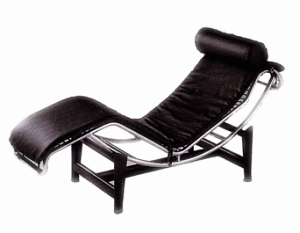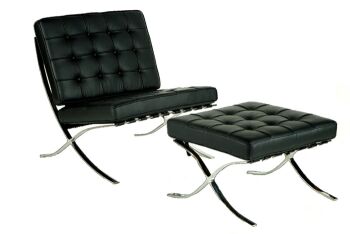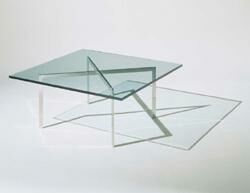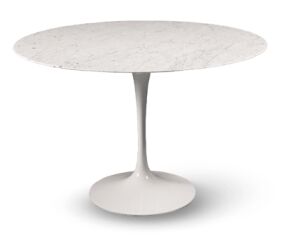This famous chaise lounge earned its reputation not only from beauty, but from comfort as well. The entire chaise rotates on the chrome arc that rests on the base. Position it so that your head is lifted for reading, or move your legs up for relaxing.
Le Corbusier (aka Charles-Edouard Jeanneret) was already well-known for his architectural accomplishments when he began experimenting with furniture design in 1928. The creations were the result of a collaborative effort between himself, architect Charlotte Perriand and his cousin Pierre Jeanneret, whom oversaw production. Their revolutionary works forged their way into the forefront of "Modern Classics" with the innovative use of steel tubing as an element of design rather than structure. Available in black leather and chrome.
$529.


This chairs was designed for the Deutscher Werkbund Pavilion at the World Exposition, Barcelona 1929. The chairs were to be used by the King and Queen of Spain who were to make an official visit and sign the guest book. This chair is popularly referred to as the "Barcelona Chair". It was first produced by Berliner Metallgewerbe Joseph Muller. In 1931 this production passed to Bamberg Metalwerkstatten, Berlin. The upholstery detailing is generally credited to Lilly Reich.
29.5 x 29.5 x 29.5h
Frame made from flat steel bars, mirror polished and chromed. Seat and back padded and upholstered with leather. Suspended on leather straps.
$1800.00
Designed by Ludwig Mies van der Rohe for his 1929 Barcelona Pavilion and to place in the entrance hall of the Tugendhat House in Brno, Czech Republic, the Barcelona coffee table displays the pure compositional structure that epitomizes modern architecture.
Ludwig Mies van der Rohe's signature is stamped into the base. Top is 3/4" thick clear polished plate glass with 1/8" wide beveled edge. Base is premium grade 202 bar stock stainless steel (sometimes chrome plated) the frame is hand-ground and hand-buffed to a mirror finish. Single piece base construction ensures long term durability. Dimensions: 100 x 100 x 55 cm.
Winner of The Museum of Modern Art Award.
$1576

There is some doubt regarding the chronology of the pedestal series. However, it is certain that the chairs were developed before the tables. It has been said that Eero Saarinen began drawing the chairs as early as 1953. However, Don Petit, Saarinen's assistant is reported as saying that the first sketches were made in 1955 and full sized models of the chairs were completed in 1956. The works on the tables began after 1956 and were the last pieces of furniture designed by Saarinen before his untimely death in 1961.
The pedestal group was Saarinen's attempt to solve the problem of the "slum of legs" and to eliminate the resulting visual clutter. Since his early work with Eames, he had continued to work on the problem of creating "organic furniture", that is, furniture in a unified form and in a single material. Visually the pedestal group presents an organic unity. However, given the technical limits of the time, Saarinen did not manage to make this series from a single molded material. The bases had to be made of cast aluminum since molded plastic in such a graceful form did not have sufficient strength to support a heavy table top or large person. Consequently, from this point of view, Saarinen considered this project a failure and hoped some day to find a moldable plastic material strong enough to solve the problem without having to compromise the beauty of the final object.
Table with large cast aluminum pedestal enameled.
ROUND: Diameter 47" x 28"h
$2,328
